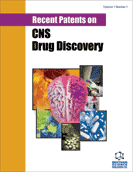Abstract
Endocannabinoids are lipid transmitters binding and activating the cannabinoid receptors. Both cannabinoid receptors and endocannabinoids, such as 2-arachidonoylglycerol and anandamide, have been shown to control numerous physiological and pathological processes, including in the central nervous system. Thus regulating endocannabinoid levels in-vivo represents an interesting therapeutic perspective in several CNS-related diseases. To date four enzymes - Fatty Acid Amide Hydrolase (FAAH), N-Acylethanolamine-hydrolyzing Acid Amidase (NAAA), Monoacylglycerol Lipase (MAGL), α/β-Hydrolase Domain 6 (ABHD6) - were shown to control endocannabinoid levels in tissues or in intact cells. While the searches for NAAA and ABHD6 inhibitors are still in their beginning, a growing number of selective and potent inhibitors are now available to inhibit FAAH and MAGL activities. Here, based on the literature and patent literature, we review the compounds of the different chemical families that have been developed to inhibit these enzymes, with a special emphasis on FAAH and MAGL inhibitors.
Keywords: Fatty acid amide hydrolase, FAAH, inhibitors, inflammation, monoacylglycerol lipase, MAGL, N-acylethanolamine-hydrolyzing acid amidase, palmitoylethanolamide, ABHD12, ABHD6
 53
53





















